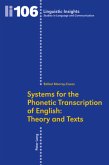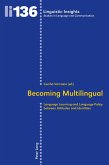This book received the Cambridge/Language Teaching Brumfit Award 2010.
Drawing upon a convergence of sociocultural theory and linguistic emergentism, this book presents a longitudinal investigation of the development of ESL users' written lexicogrammatical patterning (collocations and colligations). A qualitative methodology ('Lexical Trail Analysis') was developed in order to capture a dynamic and historical view of the ways in which the participants combined words in their writing. This involved tracing single lexemes diachronically through individuals' written corpora. The writers were interviewed about the histories of particular word combinations. Selected patterns were later tested using the principles of dynamic testing. The findings of these combined data types - essays, interviews and tests - suggest that sociocognitive resources such as memory and attention and the ability to imitate and adapt linguistic resources are paramount in the massive task of internalizing the lexicogrammatical patterning of a second language. The participants were agents of change, seeking assistance and adapting patterns to suit their changing goals. Their activity is theorized in a model of language patterning from which implications for second language learning and teaching are drawn.
Drawing upon a convergence of sociocultural theory and linguistic emergentism, this book presents a longitudinal investigation of the development of ESL users' written lexicogrammatical patterning (collocations and colligations). A qualitative methodology ('Lexical Trail Analysis') was developed in order to capture a dynamic and historical view of the ways in which the participants combined words in their writing. This involved tracing single lexemes diachronically through individuals' written corpora. The writers were interviewed about the histories of particular word combinations. Selected patterns were later tested using the principles of dynamic testing. The findings of these combined data types - essays, interviews and tests - suggest that sociocognitive resources such as memory and attention and the ability to imitate and adapt linguistic resources are paramount in the massive task of internalizing the lexicogrammatical patterning of a second language. The participants were agents of change, seeking assistance and adapting patterns to suit their changing goals. Their activity is theorized in a model of language patterning from which implications for second language learning and teaching are drawn.








